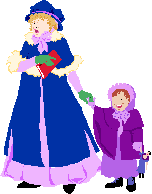Small Screen, 12(1), 23-25,
1999.
|
When the Teacher's Away--A Video
Option
Johanna E. Katchen |
Those
of us who have experience using video often tell novices that video is so much
more than just a babysitter, a way to take a rest or give students a reward.
Indeed, we often end up working much harder to produce a good lesson that
incorporates video.
If
a teachers works in a school that allows/encourages conference attendance, for
example, and that is flexible about how the teacher runs and makes up classes,
then video make-up is an option as long as the teacher can plan ahead and make
the video part of the lessons. The
teacher can videotape her lecture in advance or prepare video materials to be
used with information/directions/exercises on paper.
Students may all watch together during class time (this requires an
assistant to run the equipment and supervise the class) or students can complete
the assignment on their own in a self-access centre.
The choice of how to do this usually depends on the logistics of the
situation.
In
December 1997 I was to attend a three-day conference in Hong Kong.
M y second year Oral
Practice class (a two-semester required course for students majoring in English)
met on Thursday afternoons, and I would have cancelled it except that they would
have holidays the following two weeks for Constitution Day (December 25) and New
Year (January 1), after which we would only meet January 8 and then have a final
exam on January 15. My colleague
teaching the other section, which met at the same time, had scheduled a quiz for
his group, so it would be inconvenient for him to do a lesson with both sections
together, as we sometimes do. Moreover,
because of the various schedules of the 23 students, it would be extremely
difficult to reschedule the class for anther time.
Some teachers give outside assignments when they go away, and it was this
option I decided to use, combined with video.
y second year Oral
Practice class (a two-semester required course for students majoring in English)
met on Thursday afternoons, and I would have cancelled it except that they would
have holidays the following two weeks for Constitution Day (December 25) and New
Year (January 1), after which we would only meet January 8 and then have a final
exam on January 15. My colleague
teaching the other section, which met at the same time, had scheduled a quiz for
his group, so it would be inconvenient for him to do a lesson with both sections
together, as we sometimes do. Moreover,
because of the various schedules of the 23 students, it would be extremely
difficult to reschedule the class for anther time.
Some teachers give outside assignments when they go away, and it was this
option I decided to use, combined with video.
In
my Oral Practice course, one of the themes running through it is (American)
holidays. In the first (fall)
semester, we have activities for Halloween, Thanksgiving Day, Christmas, and,
depending on the calendar, (western) New Year.
I would miss the pre-Christmas class, but I could use a video with a
holiday theme. The ideal film seemed to be A
Christmas Carol; students study English literature and read Dickens, and the
story of Scrooge is part of English-speaking culture.
Moreover, I had a copy of the 1984 version directed by Clive Donner (20th
Century Fox Home Entertainment)
with George C. Scott in the role of Scrooge, and I thought students would find
this version more attractive than earlier black and white versions.
Scrooge has often been portrayed as a caricature of a miser, something
unreal. Scott portrays Scrooge as a
real person, someone who started out rather normal but who, through a series of
life experiences, became progressively bitter and selfish.
We feel sorry for him.
However,
in using A Christmas Carol, there were still other points to consider.
While many of the students would be familiar with the story from TV,
foreign films are shown in Taiwan with the original language and sound track and
with Chinese subtitles added. The
version I would show had no Chinese subtitles.
To compound the problem, the English setting meant that actors would be
approximating a somewhat old-fashioned British variety.
Students in Taiwan learn American English and many of them have a phobia
about the comprehensibility of other varieties.
Therefore, I decided to minimise language problems by focusing more on
other aspects of the film.
The
week before the film was shown, I spent a little time with the class discussing
the main ideas surrounding the Christmas holiday and some background to A
Christmas Carol. Most students
could tell me the basic plot of the story.
Then I gave students the assignment, told them why I would be away and
how the class would be conducted (by my graduate assistant) the following week.
As students already knew the story and wouldn’t have to struggle with
language in order to follow it, I asked them to look at other aspects of the
film. I wanted them to enjoy the film and the holiday
ambience but at the same time have a reason for watching and to do a little
critical thinking. I reminded them
that although it was primarily a speaking class, we sometimes worked on other
language skills.
|
Assignment
In
class, watch A Christmas Carol. (Note:
there is a copy in the self-access lab if you would like to see it
again. There is also an
older version of the film on the shelves.)
Then write a composition (at least one page single-spaced on the
computer) on ONE of the
following questions.
1.
In the story, Scrooge has an experience (seeing the ghosts) that
makes him change his attitude toward life.
Do you think it is possible for a person to change so rapidly?
Support your answer (whether yes or no) with reasons and
examples.
2.
If you have read the story or seen another film version of the
story, compare it with the version of the film you have watched here.
Be critical: what are good points or shortcomings of each
version?
3.
Consider the language in the film.
Which speakers are easier for you to understand?
Which are harder? Why?
4.
Think of the WAY the film was made.
Comment on things like camera shots and angles, how music was
used, etc. Give examples of
certain scenes where the film-making techniques impressed you.
Would you have interpreted any of the scenes differently?
Why?
5.
Consider the representations of the three ghosts.
Do you think the way they are presented is effective?
If you were making the film, how would you make the ghosts look,
speak, and behave? |
Student
Responses
All
students completed the assignment and, by the tone of their writing or attached
drawings and Christmas greetings, several seemed to enjoy it.
Most chose Option 1 (and included a few Chinese ghosts) to support the
argument that people can change due to some “shocking” experience.
Only three students argued that “a leopard ever changes his spots”
and such incredible things only happen in movies.
One student chose Option 2 and compared our 1984 version with a later
version in which Scrooge is portrayed as a businesswoman.
The student preferred the latter because it was more modern and feminist,
not scary, and used American English.
Another
student chose Option 4 and discussed some of the contrasting camera
shots/portrayals in the film and also the music effects.
Three students took Option 5; all of them approved of the way the Ghost
of Christmas Future was represented but they had suggestions for portraying the
other ghosts. Of the Ghost of
Christmas Past, one student wrote the following:
“If
I were making the film, I would make it as a child,—and yet not quite like a
child, in some ways like an old man, an old man who has become no bigger than a
child. The hair, hanging down on
its neck, is white as if it is with age, and yet the face is young.
It is dressed in pure white. It
is the Ghost of Christmas Past, and most of ‘things’ (people) in the past
are old, at least they are not new, so in some ways, for example hair, like an
old man. On the other hand, it is
Scrooge’s past, Scrooge’s childhood and adolescence; it means, it is young
Scrooge, so the figure of the spirit may be like a child.
Furthermore, I will still present the kindness and tenderness of the
spirit because Scrooge’s behaviours in the past are not as “scrooge” as
those now. In the origin, Mr.
Scrooge is also a man with a kind heart and with love in his mind. It seems that the mistakes he makes are forgivable.”
In
1998, I did not plan to attend a conference in December.
However, in mid-December I was summoned to attend an important meeting in
Taipei City on December 24 at noon. My
Oral Training class began at 1 p.m., so once again I brought out A
Christmas Carol. Although I
thought I prepared the students equally well the second time, the results were
not as good. Twenty-six of the
twenty-seven students choose Option 1, and the supporting examples weren’t
nearly as clever or well-written. My
colleague teaching the other half of the students in that “class” and I have
often said that the 1997-98 class we had was especially talkative, energetic,
and creative; and the results from this assignment may just show what all
teachers know—that all groups are different.
In
addition to this assignment, I have asked students to watch, as part of their
regular assignments, other videos on their own time, including videotapes of
their own speaking performance. Videotapes,
like audiotapes, give us flexibility; teachers and students do not have to watch
and listen at the same time in the same place.
As long as students are adequately prepared and the assignment fits in
with the class, we can sometimes use the technology as a very professional
“babysitter.”
 y second year Oral
Practice class (a two-semester required course for students majoring in English)
met on Thursday afternoons, and I would have cancelled it except that they would
have holidays the following two weeks for Constitution Day (December 25) and New
Year (January 1), after which we would only meet January 8 and then have a final
exam on January 15. My colleague
teaching the other section, which met at the same time, had scheduled a quiz for
his group, so it would be inconvenient for him to do a lesson with both sections
together, as we sometimes do. Moreover,
because of the various schedules of the 23 students, it would be extremely
difficult to reschedule the class for anther time.
Some teachers give outside assignments when they go away, and it was this
option I decided to use, combined with video.
y second year Oral
Practice class (a two-semester required course for students majoring in English)
met on Thursday afternoons, and I would have cancelled it except that they would
have holidays the following two weeks for Constitution Day (December 25) and New
Year (January 1), after which we would only meet January 8 and then have a final
exam on January 15. My colleague
teaching the other section, which met at the same time, had scheduled a quiz for
his group, so it would be inconvenient for him to do a lesson with both sections
together, as we sometimes do. Moreover,
because of the various schedules of the 23 students, it would be extremely
difficult to reschedule the class for anther time.
Some teachers give outside assignments when they go away, and it was this
option I decided to use, combined with video.
